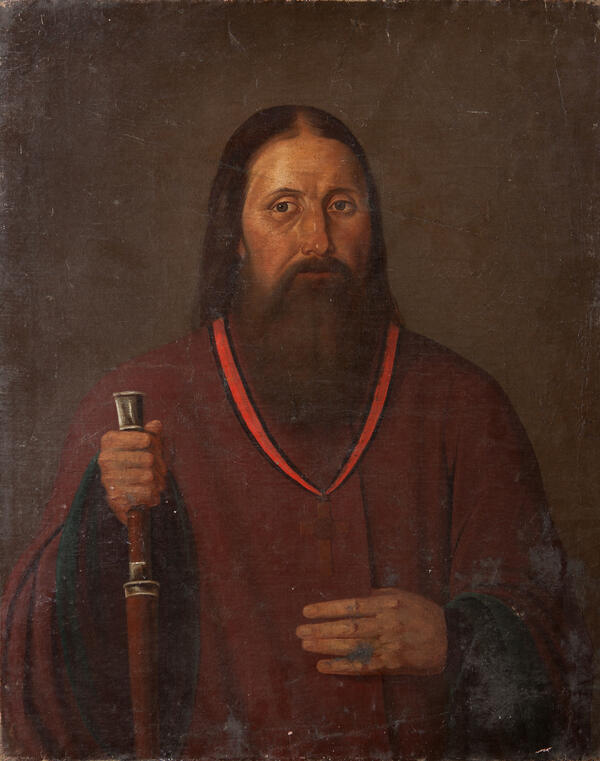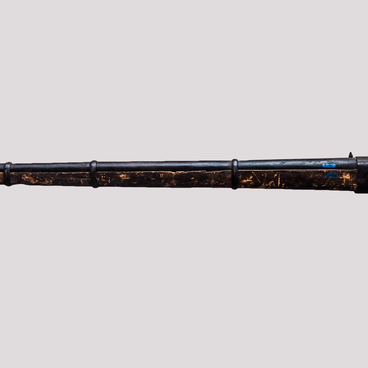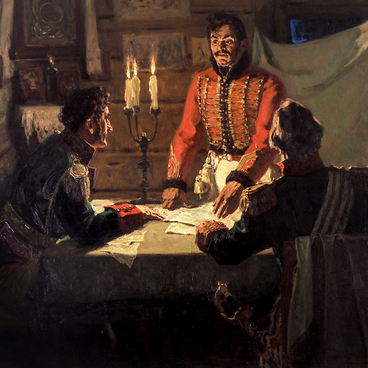Nikifor Adrianovich Murzakevich was priest of the Smolensk Hodigitria Church, author of ‘History of the provincial city of Smolensk from ancient times to 1804’, the first published work on the city’s history.
Murzakevich is considered to be the first Smolensk historian. His “History…” was first published in 1803 and since then has gone through more than one reprint, including now. While writing the book, Murzakevich used documents from the provincial archives, which later perished in the fires of 1812. And today many unique documents, for example, certificates and privileges, granted to Smolensk by Lithuanian princes and Polish kings, as well as some facts of the ancient history of Smolensk are known only due to Murzakevich.
During the battle for Smolensk on August 4 and 5, 1812, the priest was in the places of the fiercest battles: at the Nikolsky and Molokhovsky gates, on the Royal Bastion. For two days, under a hail of bullets and cannonballs, Father Nikifor fearlessly walked around the ranks of the Russian troops, confessed and gave communion to wounded and dying soldiers, sprinkled them with holy water. Subsequently, for his courage, Murzakevich was awarded a bronze pectoral cross.
After the Russian army left Smolensk, the priest did not leave the city. He lived in Smolensk for all three months of the French occupation, full of anxiety and hardship. Father Nikifor described in his diary all the events that took place at that time. Thanks to Murzakevich the Assumption Cathedral, Trinity and Hodigitria churches were saved from ruin, church relics, the cathedral sacristy, the property of the bishop’s house were preserved, and many Russian prisoners were freed. Father Nikifor eased the last days of the Smolensk nobleman, Lieutenant Colonel Engelhardt, who was sentenced to death by the French, with his conversations. Murzakevich accepted Engelhardt’s last will, was present at his execution and performed the burial ceremony.
Murzakevich accidentally met with Napoleon on the day of his entry into Smolensk on October 28, 1812, during the flight of the French emperor from Russia. Father Nikifor walked with callous prosphora to the sick tradesman. At the Trinity Monastery, he saw Napoleon, who had trouble climbing up the icy street. Murzakevich was at a loss, took off his cap and handed the stale prosphora to the French emperor. Napoleon only asked him, without looking: “Priest?” and went on. This meeting had sad consequences for Murzakevich: he was accused of violating his duty of loyal oath and was banned from priesthood. Only on July 24, 1814, the Holy Synod resolved the case of Murzakevich and issued a decree appointing him a priest of the Hodigitria church.
Murzakevich is considered to be the first Smolensk historian. His “History…” was first published in 1803 and since then has gone through more than one reprint, including now. While writing the book, Murzakevich used documents from the provincial archives, which later perished in the fires of 1812. And today many unique documents, for example, certificates and privileges, granted to Smolensk by Lithuanian princes and Polish kings, as well as some facts of the ancient history of Smolensk are known only due to Murzakevich.
During the battle for Smolensk on August 4 and 5, 1812, the priest was in the places of the fiercest battles: at the Nikolsky and Molokhovsky gates, on the Royal Bastion. For two days, under a hail of bullets and cannonballs, Father Nikifor fearlessly walked around the ranks of the Russian troops, confessed and gave communion to wounded and dying soldiers, sprinkled them with holy water. Subsequently, for his courage, Murzakevich was awarded a bronze pectoral cross.
After the Russian army left Smolensk, the priest did not leave the city. He lived in Smolensk for all three months of the French occupation, full of anxiety and hardship. Father Nikifor described in his diary all the events that took place at that time. Thanks to Murzakevich the Assumption Cathedral, Trinity and Hodigitria churches were saved from ruin, church relics, the cathedral sacristy, the property of the bishop’s house were preserved, and many Russian prisoners were freed. Father Nikifor eased the last days of the Smolensk nobleman, Lieutenant Colonel Engelhardt, who was sentenced to death by the French, with his conversations. Murzakevich accepted Engelhardt’s last will, was present at his execution and performed the burial ceremony.
Murzakevich accidentally met with Napoleon on the day of his entry into Smolensk on October 28, 1812, during the flight of the French emperor from Russia. Father Nikifor walked with callous prosphora to the sick tradesman. At the Trinity Monastery, he saw Napoleon, who had trouble climbing up the icy street. Murzakevich was at a loss, took off his cap and handed the stale prosphora to the French emperor. Napoleon only asked him, without looking: “Priest?” and went on. This meeting had sad consequences for Murzakevich: he was accused of violating his duty of loyal oath and was banned from priesthood. Only on July 24, 1814, the Holy Synod resolved the case of Murzakevich and issued a decree appointing him a priest of the Hodigitria church.



